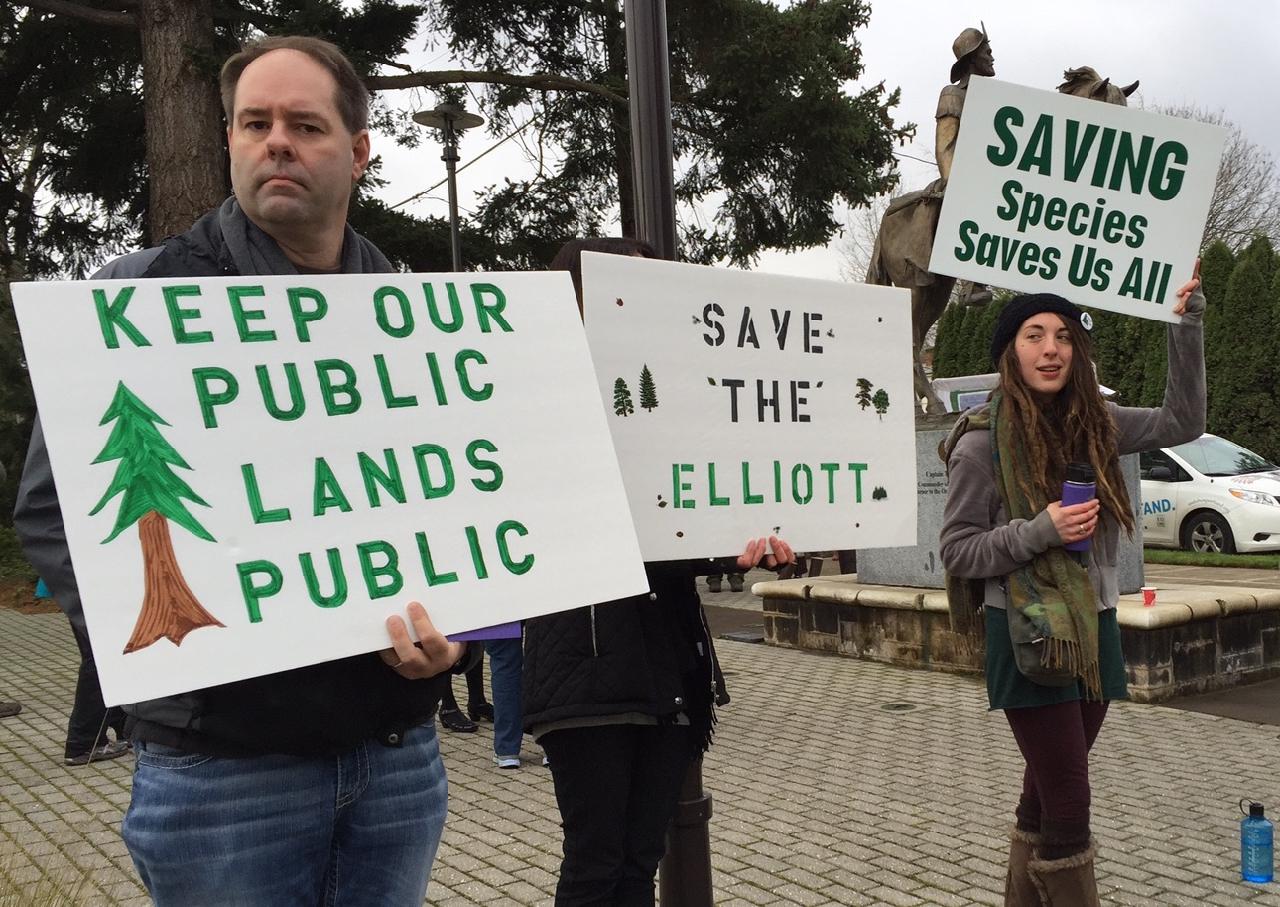
Opponents of a plan to sell the Elliott State Forest hold signs outside an Oregon State Land Board meeting.
Cassandra Profita, OPB / EarthFix
Oregon Gov. Kate Brown announced a new plan Friday that would keep the Elliott State Forest in public ownership by borrowing money on the bond market.
Under her proposal, the state would use up to $100 million in bonds to buy a portion of the forest out of its obligation to fund public schools. By removing valuable forest habitat from the Elliott from the Common School Fund, the state could protect them from logging. The remainder of the forest would be open to logging but subject to a federal Habitat Conservation Plan, which allows for some impacts to threatened and endangered species while protecting the state from lawsuits.
Under Brown's plan, the state expects the forest will still deliver an average of about 20 million board feet per year of timber to sawmills over the next 100 years, so it would still provide some logging revenue to schools. In a statement, Brown said she also hopes to work with Oregon tribes to regain ownership of their ancestral lands.
The proposal comes as the state is considering an offer from a timber company and an American Indian tribe to buy the forest for $220.8 million. Oregon's State Land Board is scheduled to meet Tuesday for an update on the status of the sale. Right now, the sale is on track to go through unless the board decides otherwise.
“Oregon’s public lands – our forests, parks and beaches – are irreplaceable assets,” Brown said in a news release. “Even in the face of complicated challenges, we must strive to protect the values Oregonians hold dear.”
About 90 percent of the Elliott State Forest is owned by the Common School Fund. State leaders say that means they’re legally obligated to use the forestland to make money for public schools. But environmental regulations and lawsuits over protected species such as the marbled murrelet seabird have reduced logging revenue from the forest. In 2013, the forest lost $13 million in revenue.
In 2015, the Oregon Land Board voted unanimously to sell the forest and use the proceeds to benefit the Common School Fund. The sole bid came from Lone Rock Timber and Cow Creek Band of the Umpqua Indians.
But at a land board meeting last month, dozens of people protested the proposed sale and urged the board to find a way to avoid privatizing a public forest.
Gov. Brown then offered up $100 million in state bonding authority and called on the public to present a "Plan B" that would keep the forest in public ownership. Using state bonding capacity will require approval from the state Legislature.
In her statement Friday, the governor said the forest "is worth far more to Oregon's children" than the appraised value of $221 million. By holding an estimated 3 billion tons of carbon, she noted, the forest also has value in helping the state meet its climate goals.
"By investing in and protecting the highest quality habitat, areas where forest management is the most vulnerable to expensive and lengthy lawsuits, we are protecting marbled murrelets, owls, and coho salmon," she said. "At the same time, sustainable forestry management on the remainder of the land can generate continued financial returns for Oregon schools."
